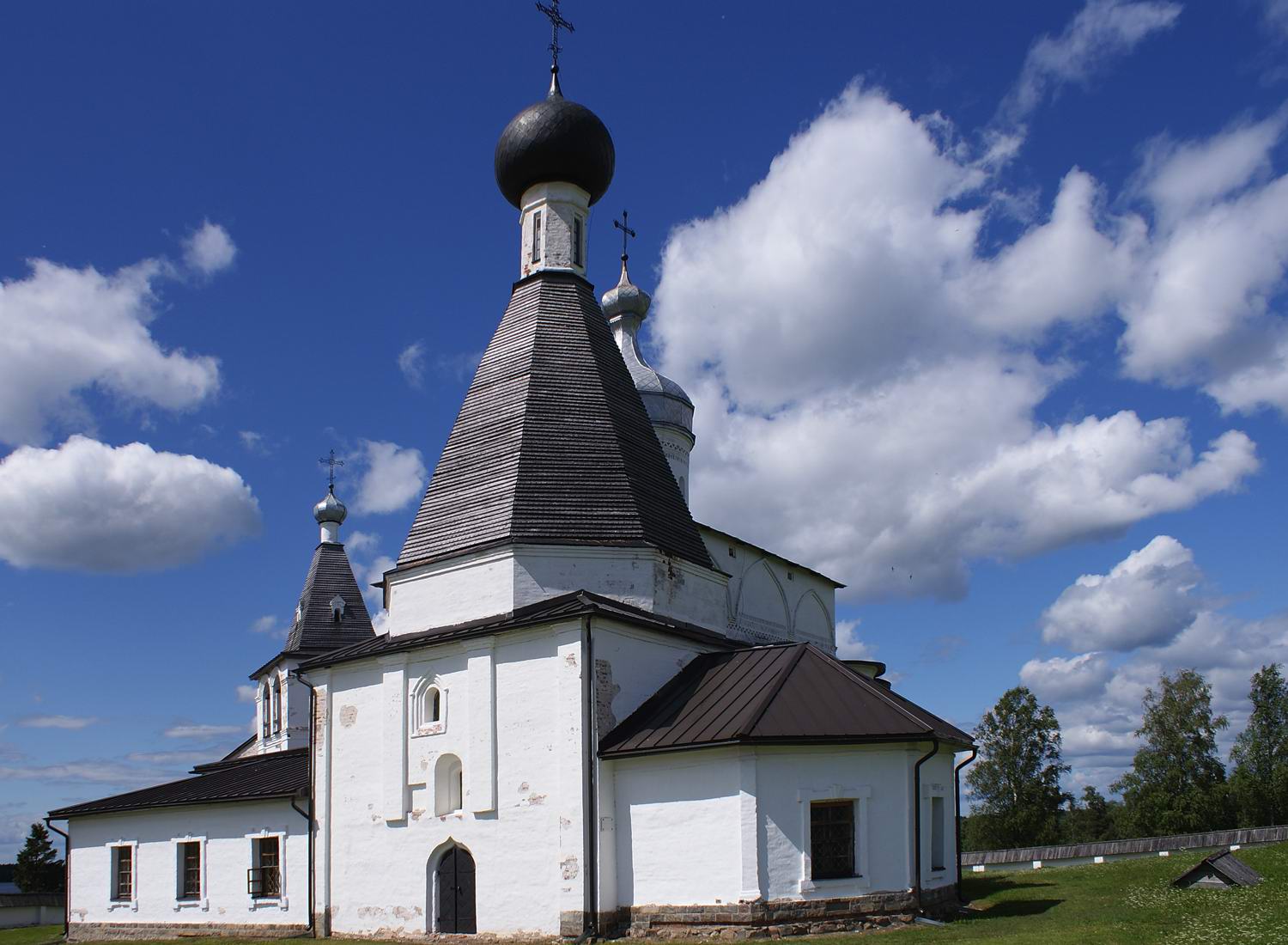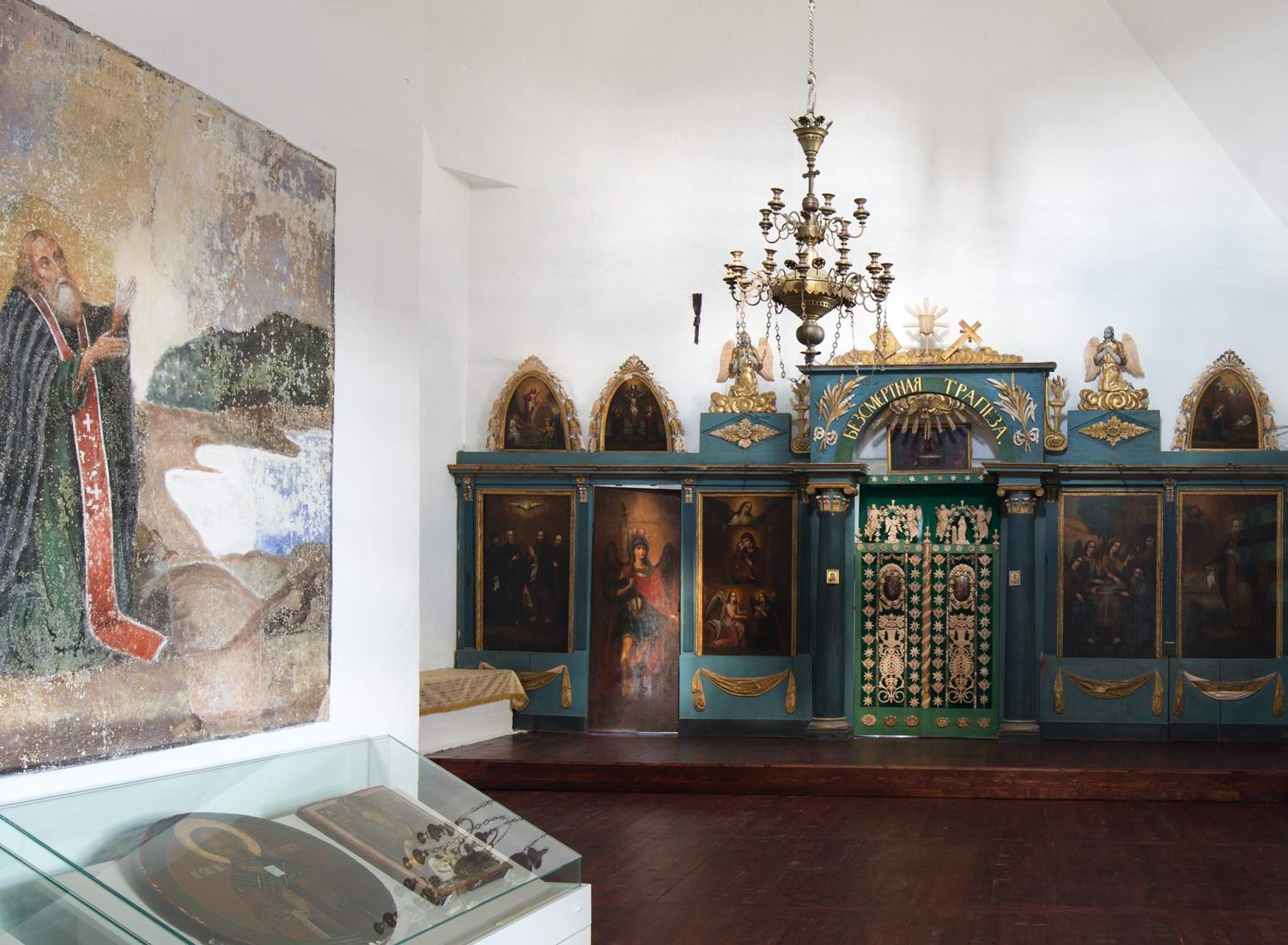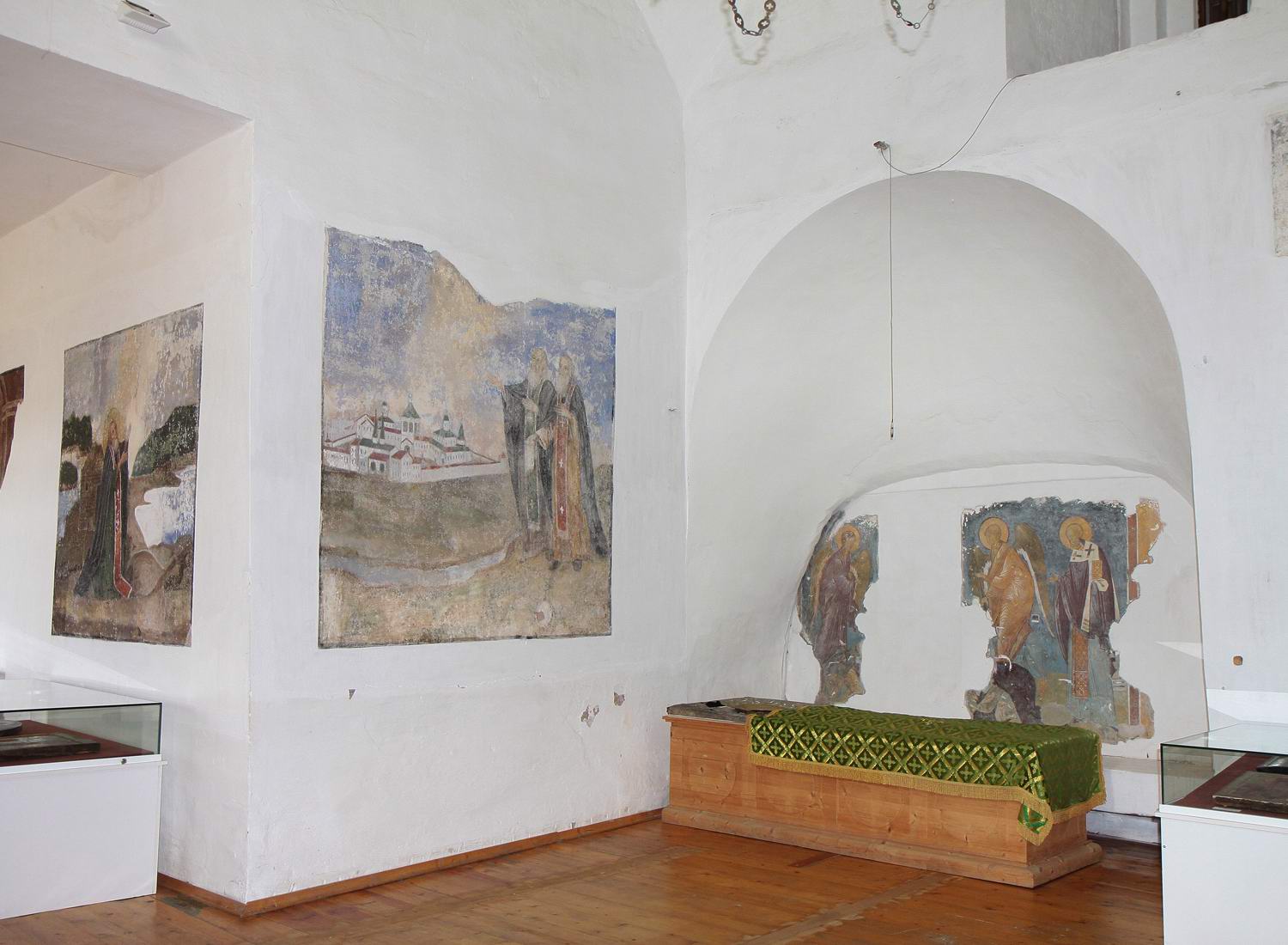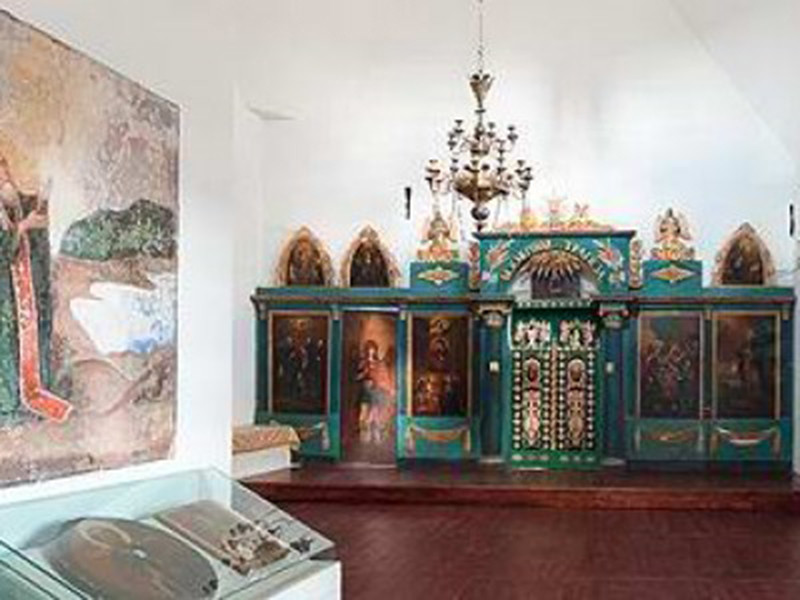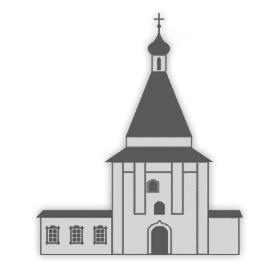
Dionysiy Frescoes Museum
The Church of Venerable Martinian
1641
The Church of Venerable Martinian
| Address: | Ferapontovo village, Kirillov district, Vologda region, Russia |
| Place: | Dionysiy Frescoes Museum |
| Created time: | 1641 |
| Matherial: | Brick |
| Category: | Architectural monuments |
The tent-shaped church was built next to the southern wall of the Nativity of the Virgin Cathedral, above the grave of St. Martinian who was the second founder of the Ferapontov Monastery.
A carved inscription on a white stone plaque informs of the conclusion of its construction on August 1, 1641.
The church was erected by stonemasons from Kirillov. Its structure is simple and laconic: a small cube with an octagonal tent and a slender drum.
The church interior has unique lighting: the soffits of the windows placed only at the top of the church direct the sunlight to Saint Martinian’s grave, thus creating the illumination effect. The dark space of the tent surmounted with a light drum is associated with the tunnel leading to the Kingdom of Heaven.
In 1502, Dionisy painted the image of the Mother of God of Pechersk with Archangels Mikhail and Gabriel, St. Nicholas and the monastery founders Ferapont and Martinian kneeling before the Virgin on the exterior southern wall of the cathedral, above St. Martinian’s grave. After the construction of the stone Church of St. Martinian, this part of the exterior wall painting is situated in the vaulted embrasure of the northern wall of the church. A very rare image of Ferapont and Martinian without haloes (they were not canonized in the early 16th century), has come down to us here. The monastery founders were canonized only in the middle of the 16th century.
A two-tier iconostasis made by Nikolai Milavin, middle class citizen of Vologda, can be seen in the church since 1838. The figures of Archangel Gabriel and the Virgin from the scene of the Annunciation that used to decorate the carved Royal Doors are not extant. The inscription “The Immortal Meal” symbolizes the sacrament of transformation of bread and wine into the body and blood of Jesus Christ.


